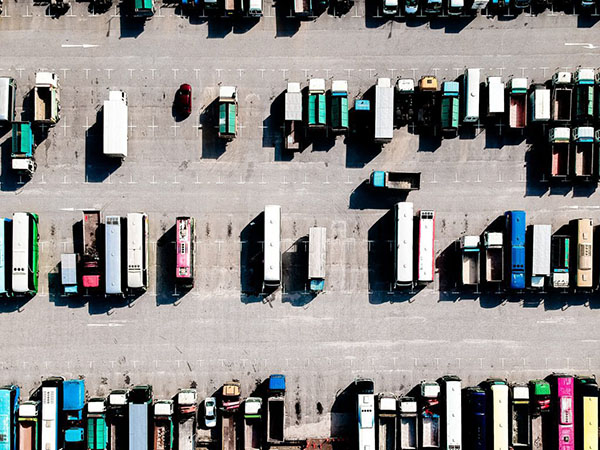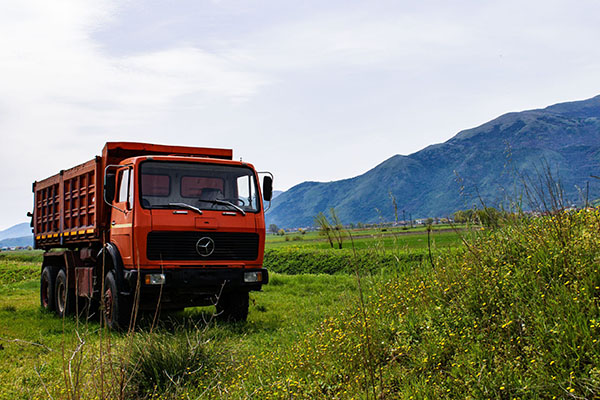Smart sensors are powerful optimization tools for assessing and improving your carbon emissions. Based on IoT technology, smart sensors provide in-depth data insights on waste management, such as the fill levels of bins, the fuel consumption and driving distance of your garbage trucks, and the efficiency of collection routes – all in real time.
Almost 90% of the world’s waste is collected at the wrong time. Waste is either collected too early, resulting in unnecessary costs and carbon emissions, or too late, resulting in overflowing waste, unsanitary conditions, and polluted streets. The average medium-sized European city requires approx. 1.8 million bin pick-ups every year just for residential waste. So, even the smallest improvement to waste services could make a big difference to your carbon emissions.
In this article, we explore how smart sensors can help you gain an overview of the carbon footprint of your waste operations and take action to reduce it.
Smart Sensors: A Digital Overview
Smart sensors provide you with a transparent and digital overview of your waste operations. Sensors are installed in bins to monitor and analyze waste generation patterns and fill levels. Using IoT technology, the sensors connect all of your waste containers via a cloud-based network, providing data insights that you can access online.
Smart sensors offer a clear overview of waste needs and fluctuations in demands for waste services in your area. Going digital with your waste processes can help you identify areas of improvement not only in terms of cost-savings and resource allocation, but also in terms of carbon efficiency.
Smart waste solutions empower you to get data on your collection routes, vehicle usage, fuel consumption, and driving distances. This means that you can work towards a comprehensive overview of the carbon footprint of your operational waste services. Once you establish this baseline, you are ideally positioned to work towards increasing your carbon efficiency.
Reducing Fuel Consumption with Smart Sensors
In the USA, a facility management team for a large university discovered that they could drastically reduce their carbon emissions with smart sensors. Before embarking on their smart sensor journey, the team used two large waste disposal vehicles to collect waste across the entire campus, often driving around for a total of 16 hours. They had to service every single bin on campus, even if they were empty, because they lacked a digital overview of the fill levels of containers.
After installing smart sensors in their campus bins and remotely monitoring fill levels in real time, they were able to cut their driving time in half. They could even leave one of the trucks behind in the garage, saving an entire day’s worth of fuel and radically reducing their carbon footprint.

Dynamic Routing: Waste Collection at Exactly the Right Time
Remotely monitoring the fill levels of your bins in real-time enables you to rethink your approach to waste collection. The majority of cities and municipalities still use traditional, fixed collection routes. With no knowledge of real-time waste disposal patterns, garbage disposal trucks carry out pre-planned collection routes, often emptying bins that are not in need of service. This means that trucks can end up driving routes unnecessarily, needlessly consuming and using fuel.
You can collect waste at exactly the right time by transitioning your waste services to dynamic route collection. Based on the data from smart sensors, dynamic routing calculates the most efficient route based on real-time fill levels. This means that your waste disposal trucks only service bins that need it, and drivers are automatically provided with an optimized collection route. This will help you reduce the amount of fuel that your vehicles use.
Reducing Driving Time with Optimized Routes
In the UK, a borough in southern England discovered that they could drive fewer kilometers, while servicing more containers thanks to dynamic routing. The waste authority found that in this small area alone, their trucks were driving 14% fewer kilometers every week, while also picking up more bins on a daily basis – a saving of around 26l (6.8gl) of fuel every week. If dynamic routing was expanded from this one small borough to the entire county, the carbon savings could make a significant impact on the sustainability agenda.
Data is the Path to Greener Waste Management
Data are the key to embedding more environmental sustainability into your waste practices. Data-based operations will help you start building a full overview of your carbon footprint. And the more transparency you have on your processes and practices, the easier it will be to identify areas for optimization.
Learn More About Smart Sensors and Sustainable Waste Management
Do you want to find out more about how smart sensors and dynamic routing can help you improve your waste collection and cut down on your carbon footprint? Contact us for a no-obligation chat today!
